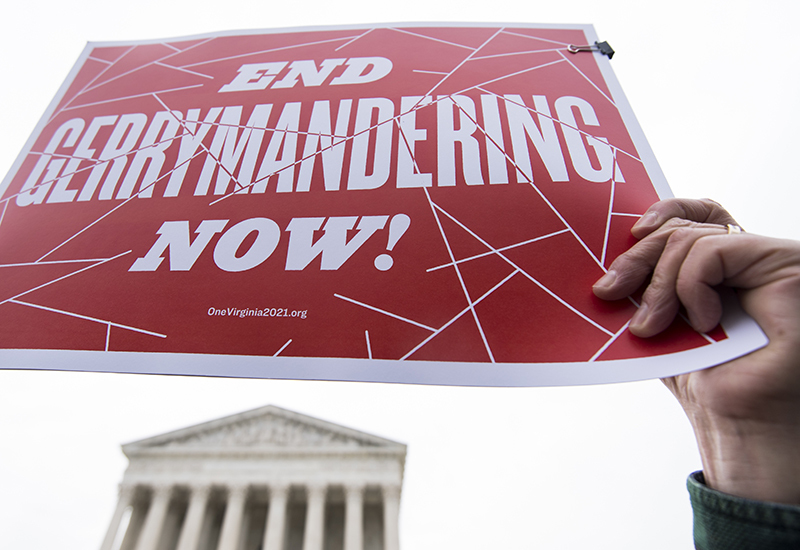
The word “disappointing” seems to be the prevailing sentiment among many local leaders after the Supreme Court ruled in favor of Maryland Democrats in a gerrymandering case. The ruling maintains the status quo and gives legislatures continued free reign to draw district maps how they see fit.
Chief Justice John Roberts was the swing vote in the 5-4 decision, concluding that “partisan gerrymandering claims present political questions beyond the reach of the federal courts.” Essentially, Roberts asserts in his opinion that gerrymandering is not a constitutional question, but rather a political one, the merits of which should be decided in individual legislatures. It’s a win for Maryland Democrats, who already hold a 7-1 majority in the state’s eight-member U.S. House delegation.
In a statement, Maryland Attorney General Brian E. Frosh called the ruling “a sad day for our democracy,” adding that “the attention now turns to Congress.” Congressman Elijah Cummings offered his reaction as well, reinforcing the need for reform when it comes to the practice of gerrymandering.
“Americans deserve to know that, when they cast their ballot, their vote truly matters in choosing who represents them,” Cummings said in a statement. “The ballot is our voice, and we must not let it be muted by partisan gerrymandering. [The] Supreme Court decision reinforces the urgent need for comprehensive redistricting reform to ensure that every American’s vote matters.”
Gerrymandering is not a new issue or practice, but, as technology and the means by which mapping is carried out has become highly specialized, a small tweak can now mean a huge advantage for either side. It’s called into question what should and can be done about the issue—many saw the Supreme Court case as a potential avenue to kickstart reform.
“Gerrymandering is wrong, and both parties are guilty,” reads part of Governor Larry Hogan’s statement on the ruling. “It stifles real political debate, contributes to our bitter partisan polarization, and deprives citizens of meaningful choices. The voters should pick their representatives, not the other way around.”
Chief among the concerns surrounding this hyper-focused gerrymandering is the question of whether or not it infringes upon a person’s freedom of speech or association, says Todd Eberly, an associate professor of political science and public policy at St. Mary’s College of Maryland. Eberly also notes that, especially in Maryland, district Democratic candidates are more incentivized to win their primary over the general election, where the maps are already drawn in a way that favors them to win. The voters represented in these two elections are vastly different, too, and it can result in more extreme candidates ending up as representatives of their districts.
This is particularly important with the impending 2020 election, 2020 census, and subsequent redrawing of maps that will shape elections for the following decade. The 2020 election—of which the Supreme Court has said, at least for now, can proceed onward with maps that have been heavily gerrymandered—will determine the party in power that will be responsible for drawing districts. In Maryland, that could likely mean an overwhelmingly Democratic General Assembly free to continue the same practices the Supreme Court just ruled in favor of.
“[A given party] wants their candidate to win—that’s why they draw their districts the way they do,” Eberly says. “At the same time, they don’t care what the other part wants. Gerrymandering has a whole host of negative effects on governance.”